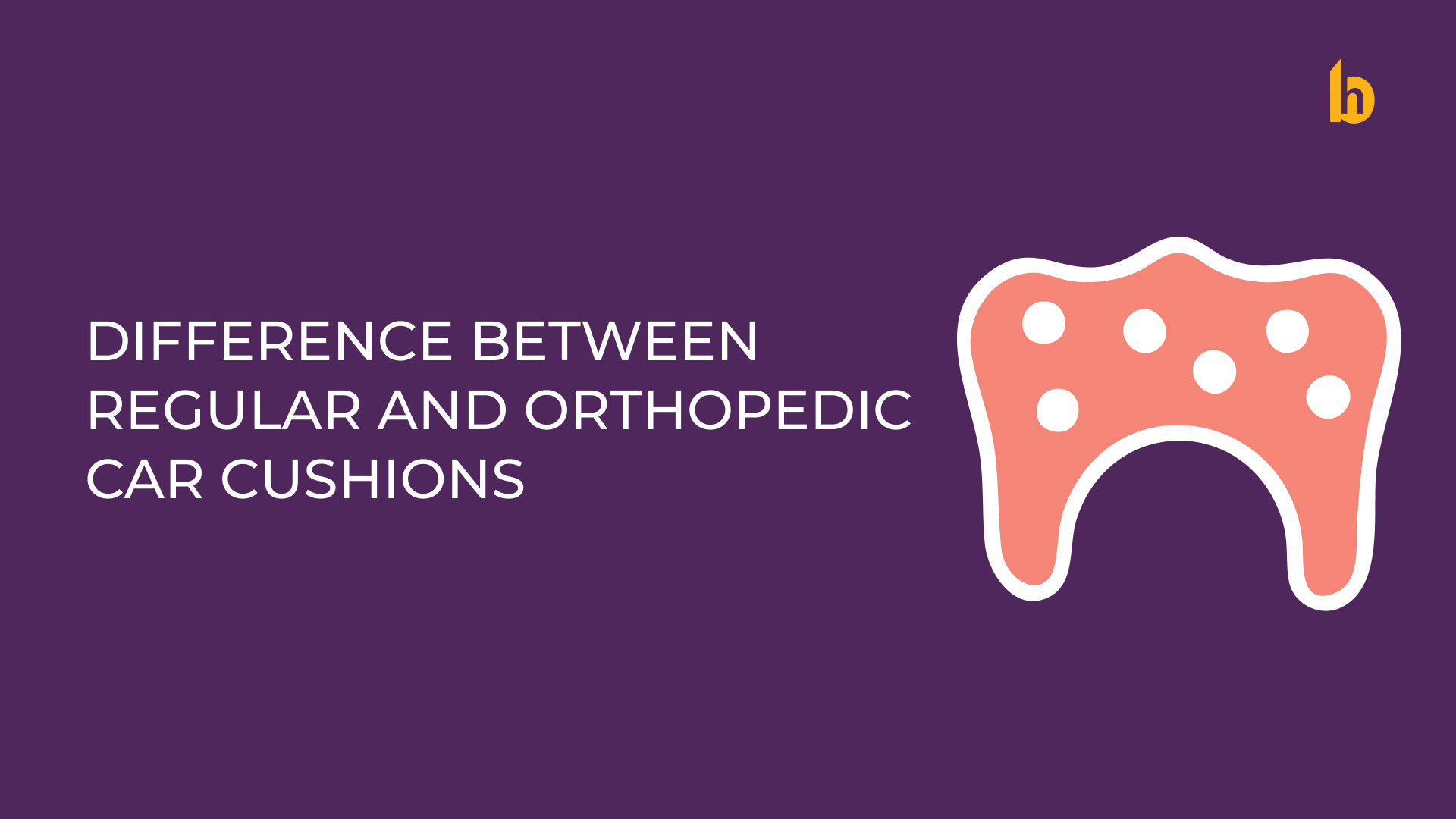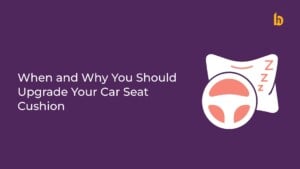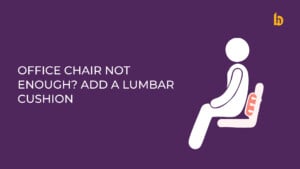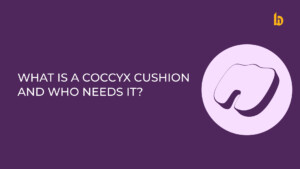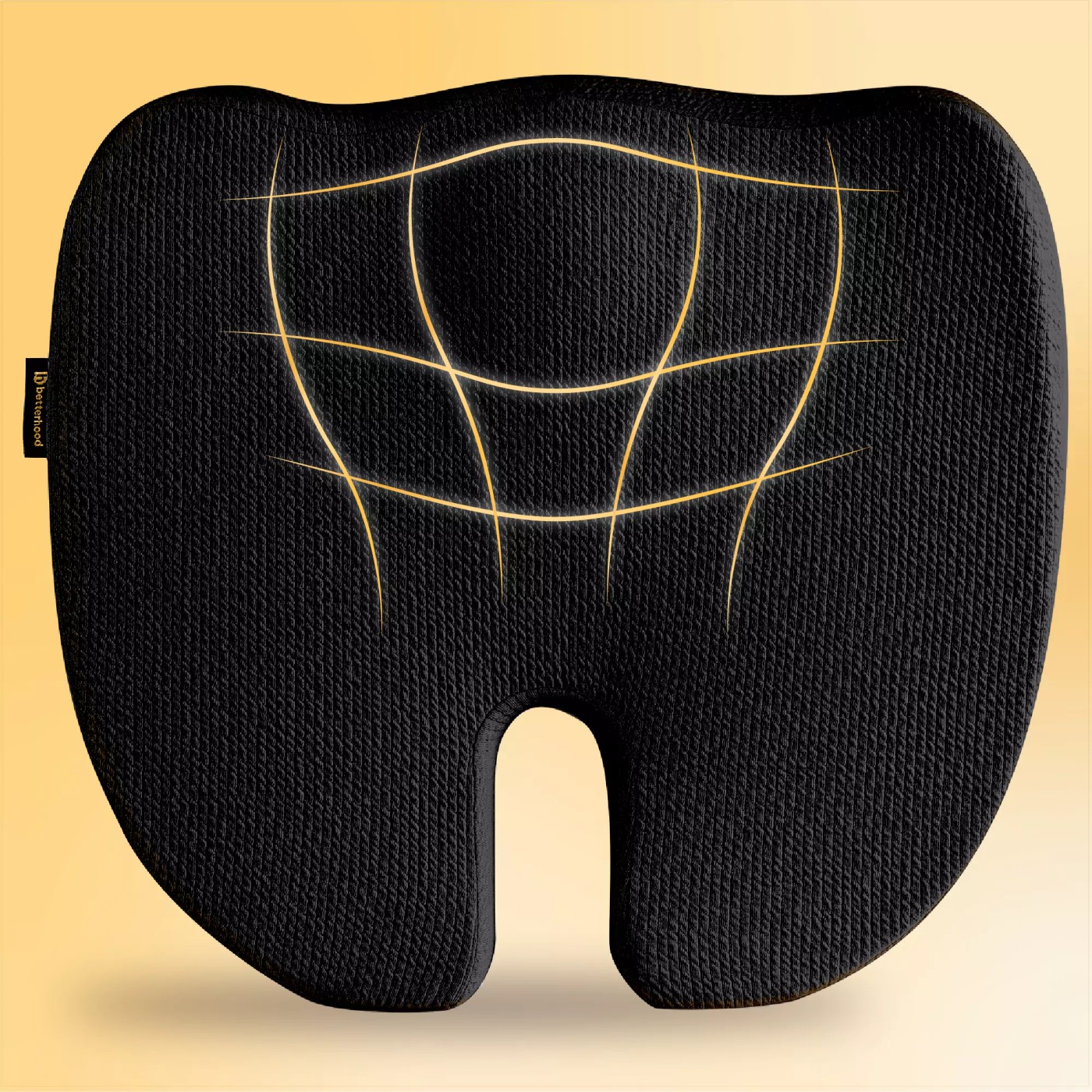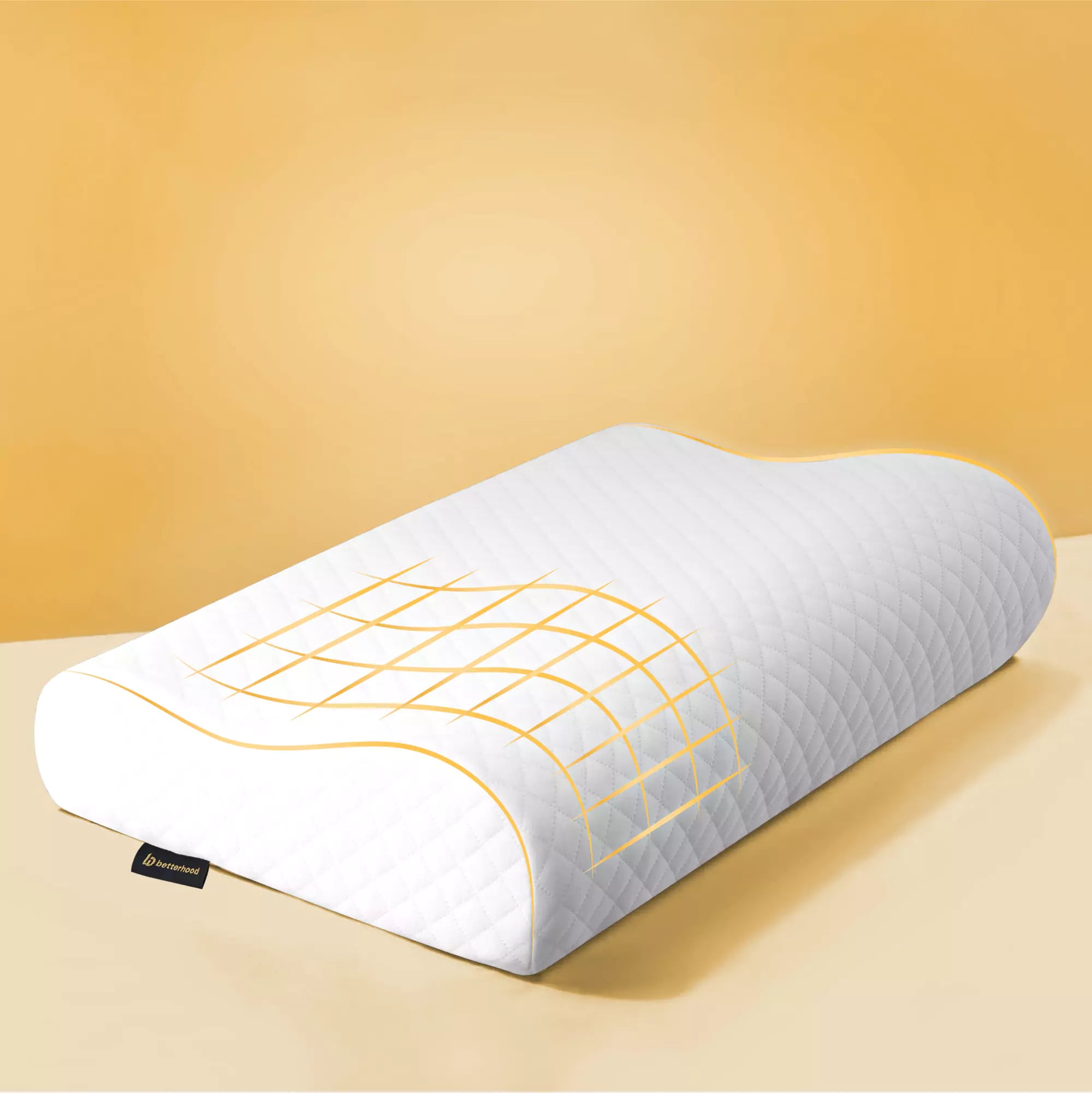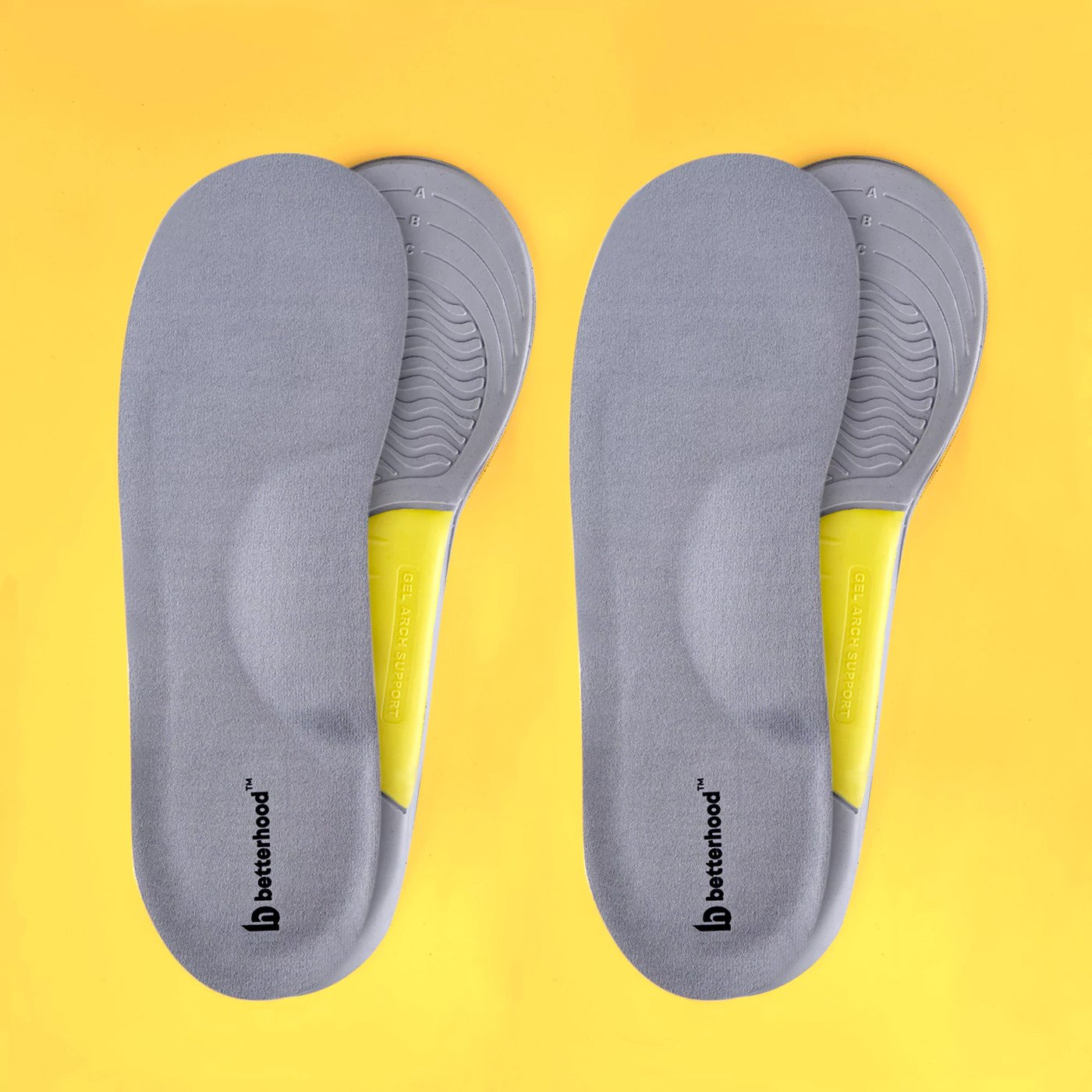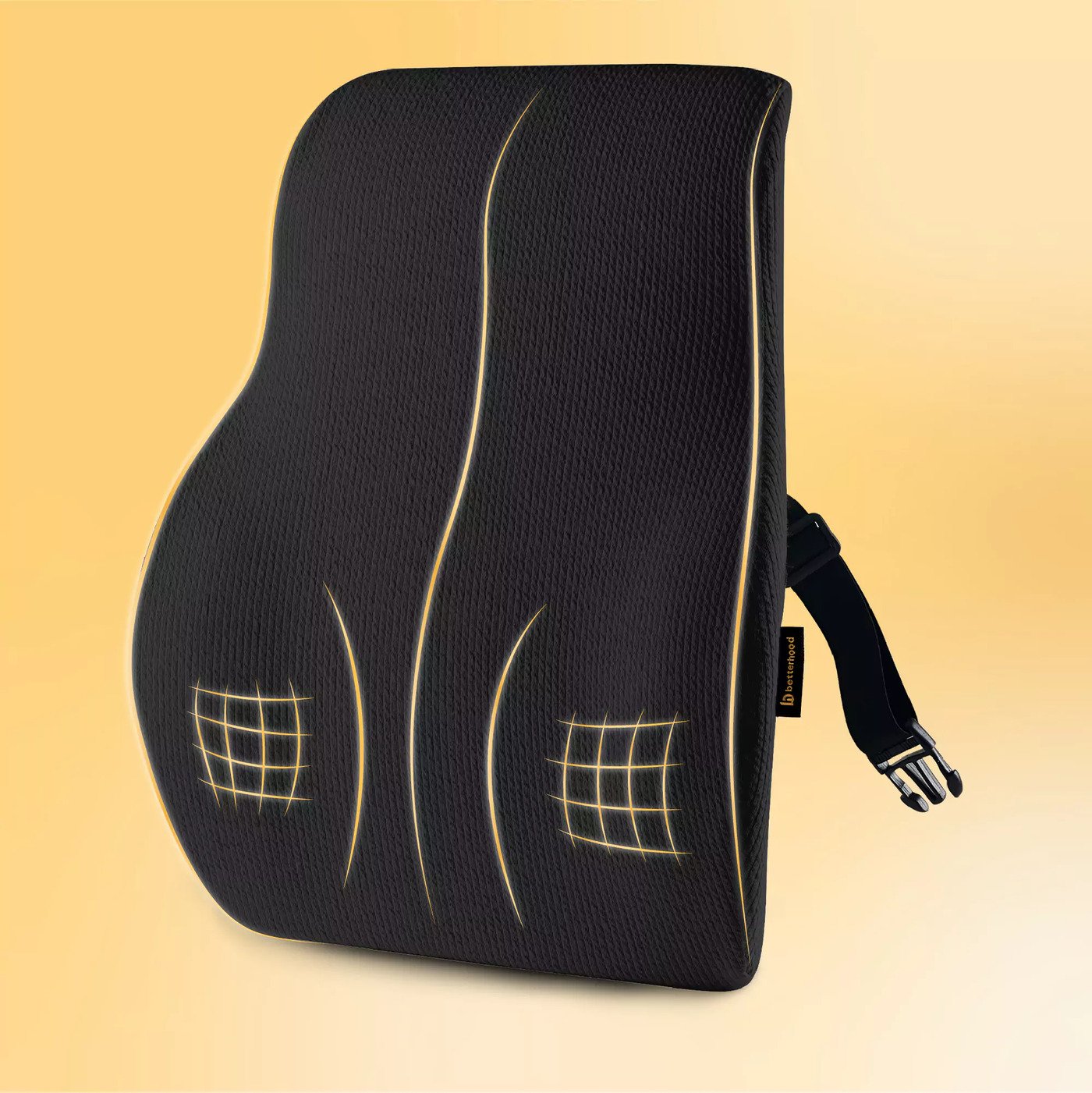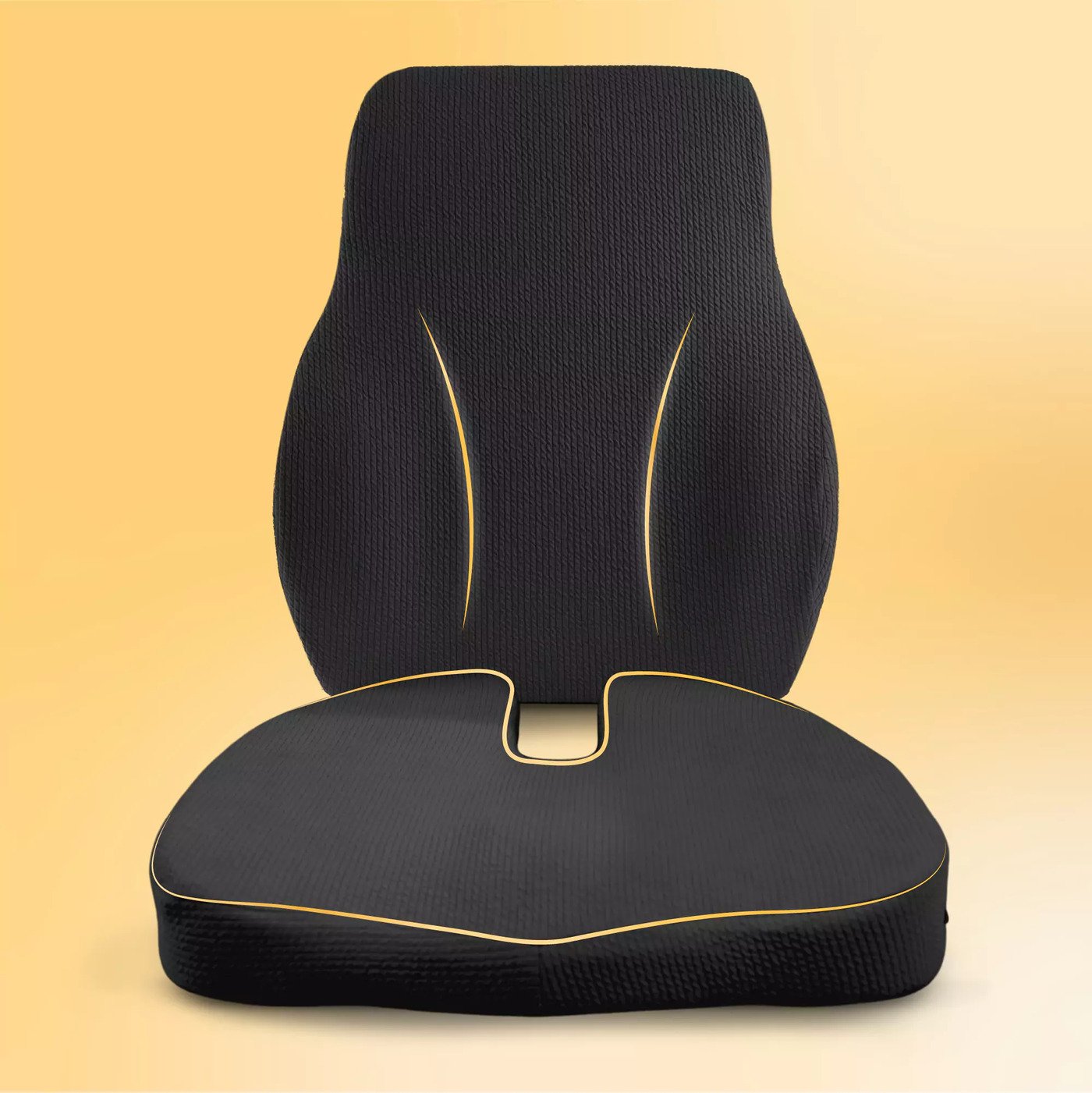Hours spent stuck in traffic, long drives, or even daily trips can make you stiff, aching, and tired. For older adults, those frequent drives can turn into an all-day chronic pain, particularly in the lower back, hips, and tailbone. The culprit is usually something that nobody pays attention to: the car cushion under them. If you’ve ever shifted uncomfortably in your seat or reached for your lower back after a drive, you’re not alone. Choosing the right car cushion could make all the difference by improving comfort, alignment, and mobility over time.
Why Does Car Cushion Choice Matter As We Age?
Since we age, our bodies naturally experience changes which make us weaker physically, leading to pains and rigidity. The spinal discs in our vertebrae lose their elasticity and moisture, deflate, and no longer get easily able to absorb shock. This results in decreased shock absorption by the spine, commonly resulting in stiffness, compression of nerves, or lower back pain. Muscle strength and mass can also be lost, making it harder to hold good posture while sitting for long periods of time [1].
Elderly individuals are particularly vulnerable to conditions such as osteoarthritis, spinal stenosis, and degenerative disc disease, all of which are worsened by improper seating surfaces. These conditions will progress unless supported, and medication or surgery might be necessary.
How Prolonged Sitting Impacts Posture and Spine Health
Recurring sitting in a way that does not supply proper back support results in slouching, forward pelvic tilt, and flattening of the lumbar spine. Poor sitting posture in Applied Ergonomics studies has been described to create greater disc pressure on the lumbar spine, especially in older individuals whose musculoskeletal resilience is already compromised [2].
This tension keeps building over time, forming herniated discs and sciatica. It also causes weakened muscles in the back and core, aggravating the problem and further weakening the spine’s overall well-being.
What Is a Regular Car Cushion?
Common Materials and Designs
Typical car cushions are mass-produced and are made for either comfort or looks rather than orthopedic support. They are usually made with polyurethane foam, cotton filling, or polyester filling. They can include gel pads, simple lumbar support, or heating features for temporary pain relief.
Most stock cushions come in various sizes and shapes, offering generic fit without being contoured to fit human curvature of the spine. While such designs may present a yielding surface initially, they do not necessarily offer sustained support or prevention of pain.
Limitations of Traditional Car Cushions for Aging Bodies
Normal car cushions flatten out in a few months of typical use. Flattening out does not provide sufficient support to the coccyx, sacrum, and lumbar spine. Abnormal spinal support in older adults could exacerbate symptoms of numbness, stiffness at the lower back, or leg pain spreading from the lumbar spine due to sciatic nerve inflammation.
Additionally, these cushions fail to redistribute pressure or assist in maintaining ergonomic posture and thus are not suitable for the elderly or those with underlying back problems. Rather than relieving pain, these cushions unknowingly help advance it.
What Is an Orthopedic Car Cushion?
Orthopedic car cushions are constructed in accordance with clinical data about how the human body is affected when sitting. They are formulated to ease the natural curvature of the spine, redirect pressure away from sensitive spots, and offer safe posture alignment. A 2018 study reported in Spine Journal verifies that focused lumbar support noticeably reduces spinal tension and optimizes comfort during sitting activities [3].
Orthopedic pillows are generally constructed of medical-grade memory foam, high-resilience polyurethane, or gel-infused foams. They adjust to the body shape and provide pressure redistribution and augmented blood flow when sat upon for extensive periods of time.
Benefits for Seniors and Individuals with Chronic Pain
Orthopedic pillows provide various aspects of health advantage to older and chronically musculoskeletal patients. They involve reduced spinal loading, better pelvic alignment, and decreased joint compression. They are particularly beneficial in surgically managed patients, scoliosis, and hip and lower back pain.
1. Lumbar Support
Better lumbar support cushion aids in maintaining the normal inward curve of the lower back. Posture like that prevents back muscle fatigue and minimizes nerve compression. Mayo Clinic states that correct lumbar position ranks among the best methods of controlling and preventing chronic pain in the back [4].
2. Coccyx Cut-Out Design
A cut-out coccyx design relieves pressure directly on the tailbone area. The design is helpful to coccydynia, herniated disc, or bruised tailbone patients. The cut-out creates a gap in which the coccyx floats in and does not touch hard surfaces and decreases swelling. NIH studies have endorsed the efficacy of these designs regarding pressure relief and tissue comfort [5].
3. Memory Foam and Temperature Regulation
Contouring support due to foam cushions in memory shape ensures uniform weight distribution of the body on the seat. High-quality orthopedic cushions consist of heat-regulating gel or light covers that prevent sweating and heat radiation, particularly on long journeys. It has been demonstrated that temperature regulation increases comfort and induces good compliance with cushion use [6].
What Are the Key Differences Between Regular and Orthopedic Car Cushions?
1. Design and Ergonomics
Orthopedic cushions are ergonomically designed to maximize alignment and weight transfer. Their design may incorporate such features as tapered profiles, contoured edges, and dedicated support zones. Standard cushions are standardized for general padding and are usually symmetrical with no special support advantage.
Ergonomic pillows assist in posture maintenance through the support of the pelvis and spine towards a healthier alignment. This is supported by research conducted at the Journal of Back and Musculoskeletal Rehabilitation, which explains ergonomic seating solutions minimize pain and maximize spinal mechanics in young and older patients.
2. Targeted Pain Relief and Support
Unlike standard cushions, orthopedic cushions are clinically designed to alleviate specific forms of pain like lower back discomfort, hip stiffness, and tailbone discomfort. The design corrects unevenness and minimizes muscle tension.
Specificity is particularly important for chronic disease or degenerative patients. Standard cushions do not have pressure-reducing characteristics and do not address unique anatomical specifications.
3. Longevity and Material Durability
Orthopedic pillows are constructed from sturdy, high-density materials that resist deformation and retain their shape and performance for years. Their construction quality enables them to sag or break down very little over time. Standard cushions lose shape faster, needing to be replaced often, which can be expensive and also painful.
Orthopedic options are more economical in the long term since they last longer and provide health benefits. Use of a cushion that is not compressed eliminates future medical treatment or pain control.
4. Price vs Long-Term Value
While orthopedic pillows are more expensive initially in the purchase process, long-term gains far exceed the cost. The consumers receive improved posture, fewer doctor visits, and overall better quality of life. A consumer review in Medical Devices: Evidence and Research confirmed that consumers who used orthopedic pillows had significant improvement in sitting for extended periods without feeling pain [7].
How Can You Choose the Right Car Cushion for You?
While choosing a car cushion, take into consideration your age, overall health condition, and daily functioning. People above the age of 50 years, or individuals with existing spinal or joint conditions, should utilize orthopedic cushions that provide pressure-relieving features. Select those with memory foam, anatomical support, and adjustable straps for better stability.
These features can also be of use to adults, particularly if what they have been doing is prolonged sitting or non-stop driving. Keeping posture and comfort from an early stage can prevent problems in the long run.
When to Consult a Physiotherapist or Spine Specialist
If your lower back pain gets worse while or after driving or you experience numbness, tingling, or stinging pain in your legs, you should consider consulting a medical expert. A physiotherapist or a spine expert will examine the condition and suggest specific kinds of cushions or some other therapies.
They can also suggest seat height, posture, and car ergonomics advice that will increase your overall well-being and comfort.
Ideal Features for Long Drives, Sciatica, or Tailbone Pain
For people who often take long trips, orthopedic cushions with some of the following characteristics can become easier to use: non-slip bases, travel-friendly handles, and ventilation mesh covers. If you suffer from sciatica, cushions with raised edges and a suspended middle can help reduce nerve pressure.
For tailbone pain, U-shaped or V-shaped cut-out pillows are necessary to prevent direct contact. If a multi-purpose cushion is what is required, there are cushions that are office or home seat support as well.
What’s betterhood’s Take: Prevention Before Pain?
Most individuals wait until their pain becomes intolerable before buying ergonomic support. This back-to-the-future method, however, can result in prolonged recuperation, heightened dependence on medication, or even surgery.
betterhood promotes a proactive method. With timely intervention of posture, seat positioning, and comfort requirements, individuals can minimize their risk of developing chronic symptoms and have more pain-free days.
Integrating Smart Comfort Solutions in Everyday Life
Orthopedic car cushions are probably the easiest and most effective method to increase daily comfort. Whether you commute to work, run errands, or hit the road on a road trip, a good cushion will make a huge difference.
By incorporating ergonomic solutions into your daily activity, not only are you avoiding pain but also promoting overall health and vitality. Through regular use, these cushions can contribute to improved spine mechanics, improved circulation, and decreased muscle fatigue.
Frequently Asked Questions
1. Are orthopedic car cushions suitable for young adults?
Yes. Although especially beneficial for older adults, orthopedic cushions offer benefits for anyone who spends extended periods sitting, including students, professionals, and long-distance drivers.
2. How does an orthopedic cushion help with tailbone pain?
These cushions minimize pressure on the coccyx by including a cut-out section. This allows the tailbone to remain suspended, reducing friction and promoting healing while preventing further irritation.
3. How often should I replace my orthopedic seat cushion?
Most high-quality orthopedic cushions last between 2 to 5 years. However, replacement should be considered if the cushion flattens, becomes uneven, or loses its original firmness and support.
4. Are there any risks in using orthopedic cushions incorrectly?
Improper alignment or using a cushion that does not match your body type may reduce effectiveness. Always follow product guidelines and adjust placement to ensure proper posture and pressure relief.
References
- https://www.ncbi.nlm.nih.gov/pmc/articles/PMC6508797/
- https://www.sciencedirect.com/science/article/abs/pii/S0003687015001313
- https://www.spine.org/Journal
- https://www.mayoclinic.org/healthy-lifestyle/adult-health/in-depth/back-pain/art-20044526
- https://www.ncbi.nlm.nih.gov/pmc/articles/PMC3057558/
- https://www.ncbi.nlm.nih.gov/pmc/articles/PMC8308856/
- https://www.dovepress.com/medical-devices-evidence-and-research-journal

